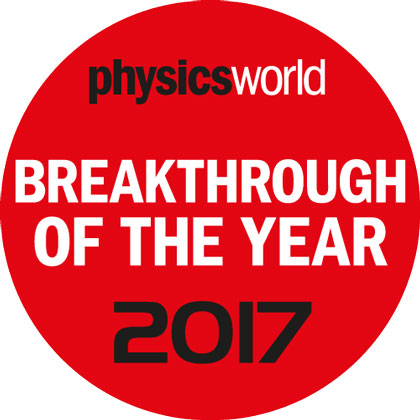Multimessenger astronomy observation of kilonova GW 170817 is Physics World 2017 Breakthrough of the Year
11 Dec 2017 by Simon Davies
The Physics World 2017 Breakthrough of the Year goes to the international team of astronomers and astrophysicists that ushered in a new era of astronomy by making the first ever multimessenger astronomy observation involving gravitational waves.
This year’s winners include more than 1,000 astronomers and astrophysicists working in nearly 50 collaborations worldwide. A full list of all the scientists and collaborations involved in the historic observation of GW 170817 can be found in Multi-messenger Observations of a Binary Neutron Star Merger, which is published in The Astrophysical Journal Letters.
By coordinating their observations of the merger of two neutron stars – an event dubbed a kilonova — this year’s winners ushered in a new era of multimessenger astronomy that for the first time integrates gravitational waves. Their efforts have already led to several discoveries since the first observations were made in August 2017 – including important clues about how heavy elements, such as gold, are produced in the universe.
“The multimessenger observation of GW 170817 epitomizes the collaborative nature of science and is a shining example of how our knowledge of the universe can move forwards when people from all over the world join together with a common scientific cause,” said Hamish Johnston, editor of physicsworld.com.
Also honoured are nine runners-up that round-off the Physics World Top Ten Breakthroughs of 2017. Topics covered range from topological physics to Egyptology and more.
The Physics World Top Ten Breakthroughs of 2017 are awarded to research reported in physicworld.com in 2017. The ten breakthroughs are chosen by Physics World editors from a shortlist based on popularity with our readers. The criteria for judging included:
- fundamental importance of research;
- significant advance in knowledge;
- strong connection between theory and experiment; and
- general interest to all physicists.